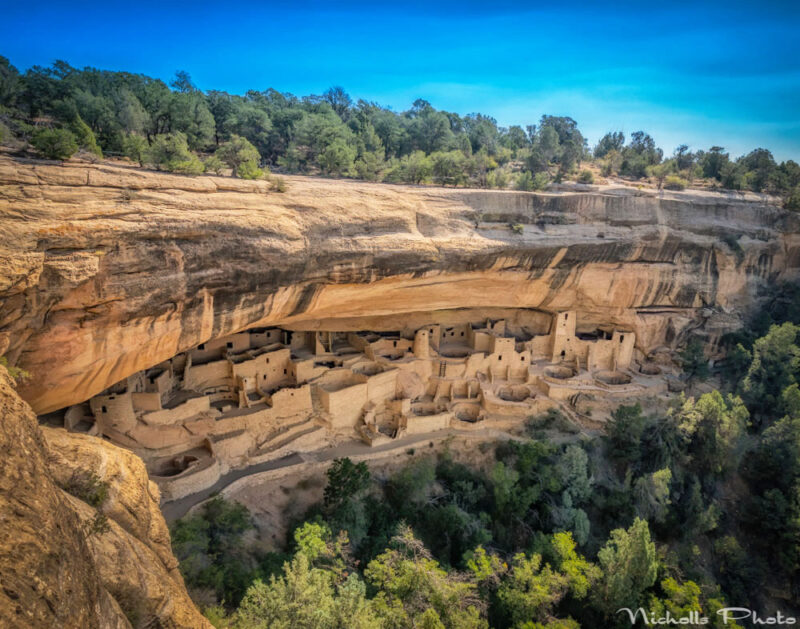
This post is Our First Pandemic Trip, Part 3: Mesa Verde National Park, which was the primary goal of this trip. We started our September trip in Wimberley, TX, visited Palo Duro Canyon State Park, then Great Sand Dunes National Park, and now on to Mesa Verde National Park. The park was established in 1906 to preserve the archaeological site, and now consists of 5,000 known archeological sites, including 600 cliff dwellings in a semi-arid environment of high mesas and deep canyons. One look at the above photo and you wonder… Why did they live in such inaccessible places? How did they survive there? What is their history?
I’ve always loved to visit archaeological sites… Maybe the reason is when I was about 10 years old I was allowed to help at an archaeological dig on a great aunt’s property. I probably would be an archaeologist, except I discovered they mostly work in very hot places and I hate the heat… So I became a physicist instead.
So here we are, lovely weather in September, at Mesa Verde National Park. The park was open except for tours or access to the sites. It was also relatively empy, being September, so we had no trouble parking or seeing the sights.
I’ll start at Cliff Palace, which most people probably do. Because tours were not operating, we could see and photograph the sites without tourists in them. The photo above shows the environment around Cliff Palace. The photo below provides a more detailed view.

Especially for those who have not visited Mesa Verde, here is a photo that shows a wide view of the environment of mesa tops and canyons.

So what is known about the history? They grew squash, corn, and beans on the mesas and lived on the mesa tops for over 700 years. Around 1200 AD people started to move down into alcoves in the cliffs. Meanwhile, the increasing population put pressure on the environment and the big game hunted out and the area deforested. Then a drought came that lasted for many years and Mesa Verde was abandoned by 1300.
Here are a couple of interesting article about Mesa Verde:
In the Cliffs of Mesa Verde
Mesa Verde: Cliff Dwellings of the Anasazi
Earlier, people lived on the mesas first in pit houses, later in pueblos, and finally moved to cliff dwellings. This is looking into the (now roofless) Sun Point Pueblo. There is an excavated pit house near this pueblo.

The park says there are over 600 cliff dwellings, and a number of them can be seen from the mesa-top roads.
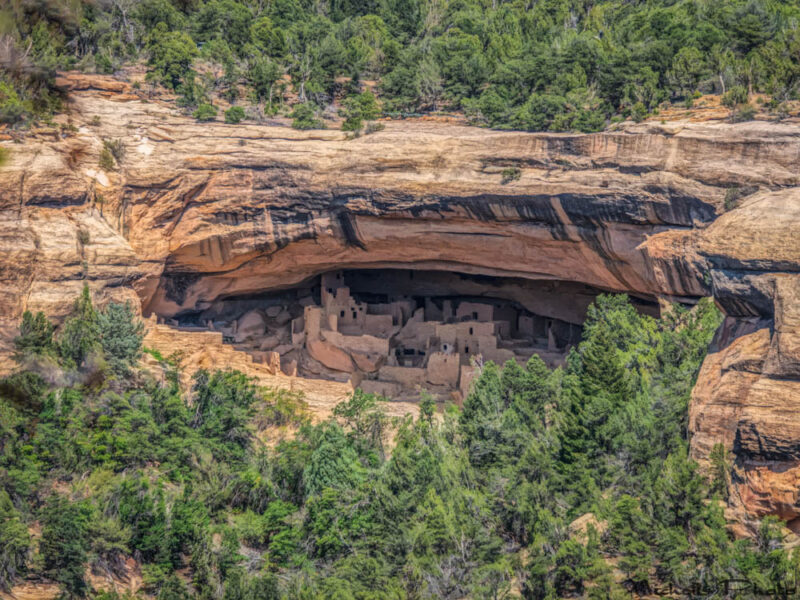
Here’s another wide view to give a sense of place for the 15-room Cliff Dwelling. It is in the center of the photograph below, near the top. You can recognize it by the large overhang.
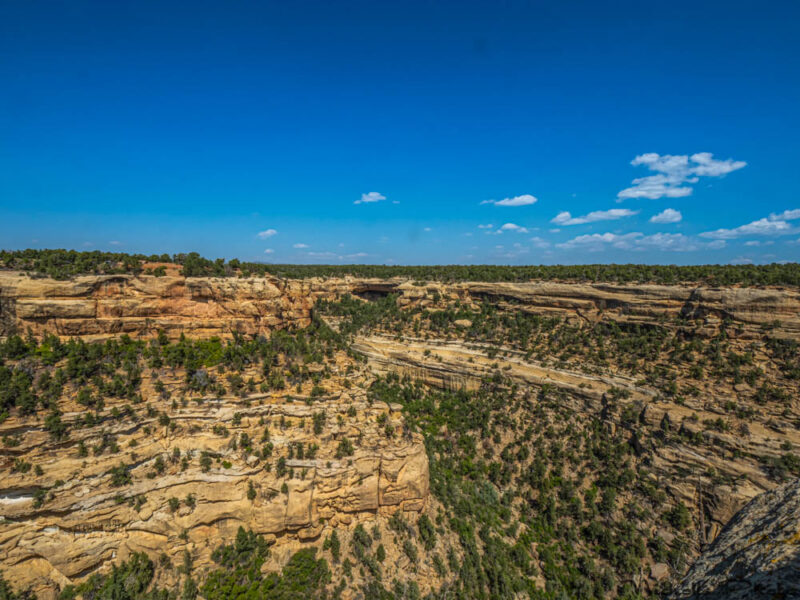
This one is called Square Tower House…

How did they get in and out of the cliff dwellings? How did they carry water and food and fuel? There are toe and hand holes and it is believed they used ropes and ladders. There are seep springs, but prehistoric reservoirs have also been found.
The photo below shows the environment of Square Tower House.
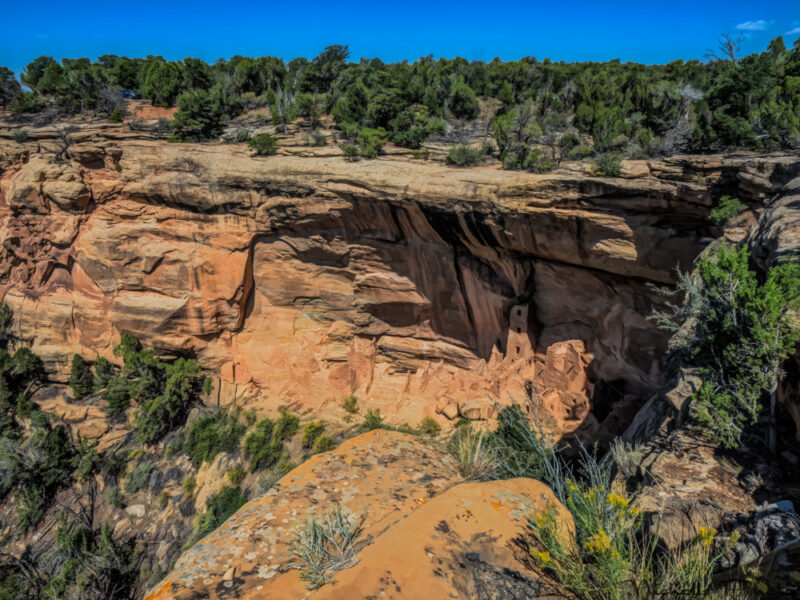
Cliff dwellings are “everywhere”. At the pullouts there are maps to help you find them, but even then it is sometimes difficult.

House of Many Windows was difficult to find. The photograph below shows why.. Look about a third of the way from the right, third of the way down and look for some black squares (the windows).
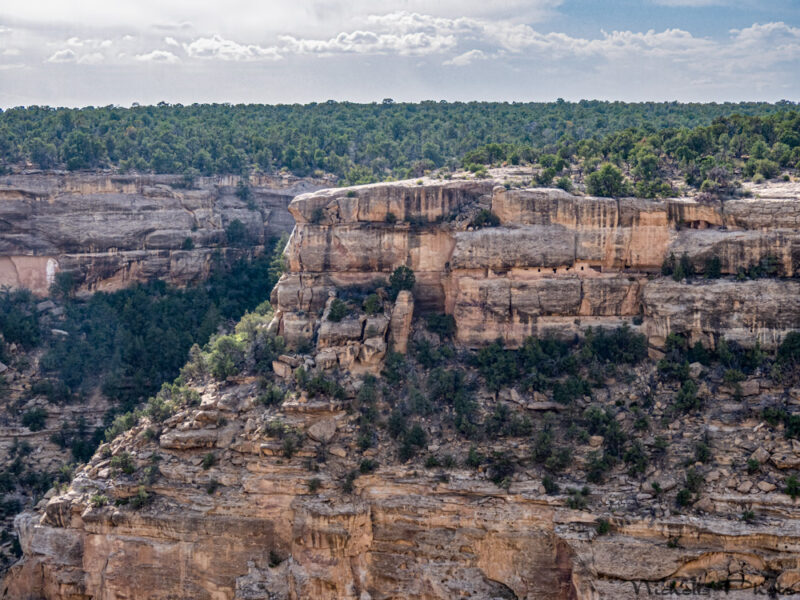
And I have to show Cliff Palace from across the canyon…

Trailers and towed vehicles are not permitted beyond Morefield Campground, which is a few miles from US 160 and the site of Park Headquarters. I didn’t measure it, but the park says it is about 21 miles (45-minute drive) from the park entrance to a cliff dwelling. The road is curvy and sometimes steep miles, so take your time. Do not expect cell service. We spent two nights at the campground and I would say that is the minimum if you want enough time to really enjoy the park.
Here is a view we saw returning to the campground… The view was made dimmer, and more spectacular, due to the haze in the air from the fires in California.

From there we crossed New Mexico almost without stopping because we Texans are not welcome in New Mexico due to our Covid 19 rates… and on to Big Bend National Park!

